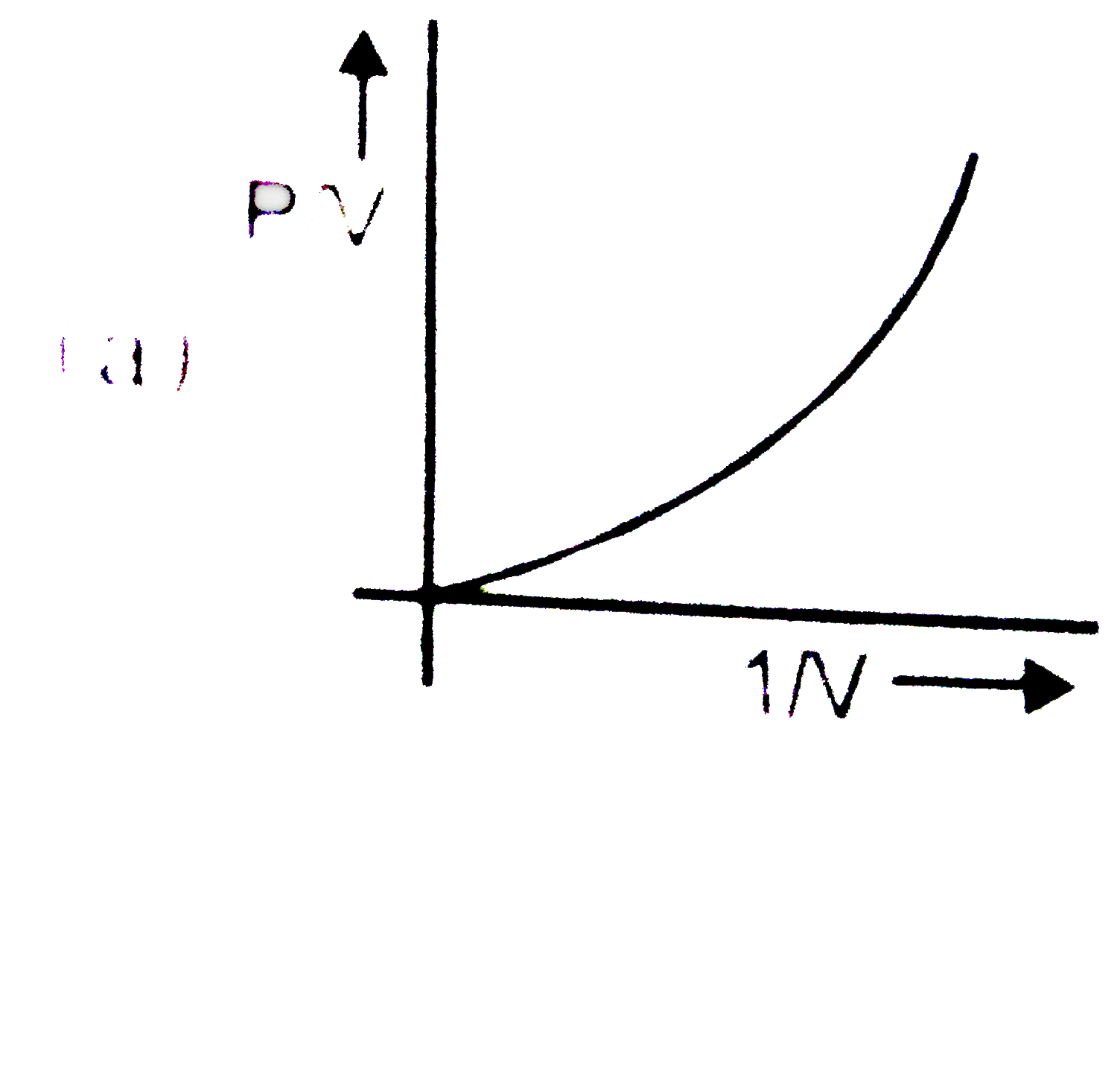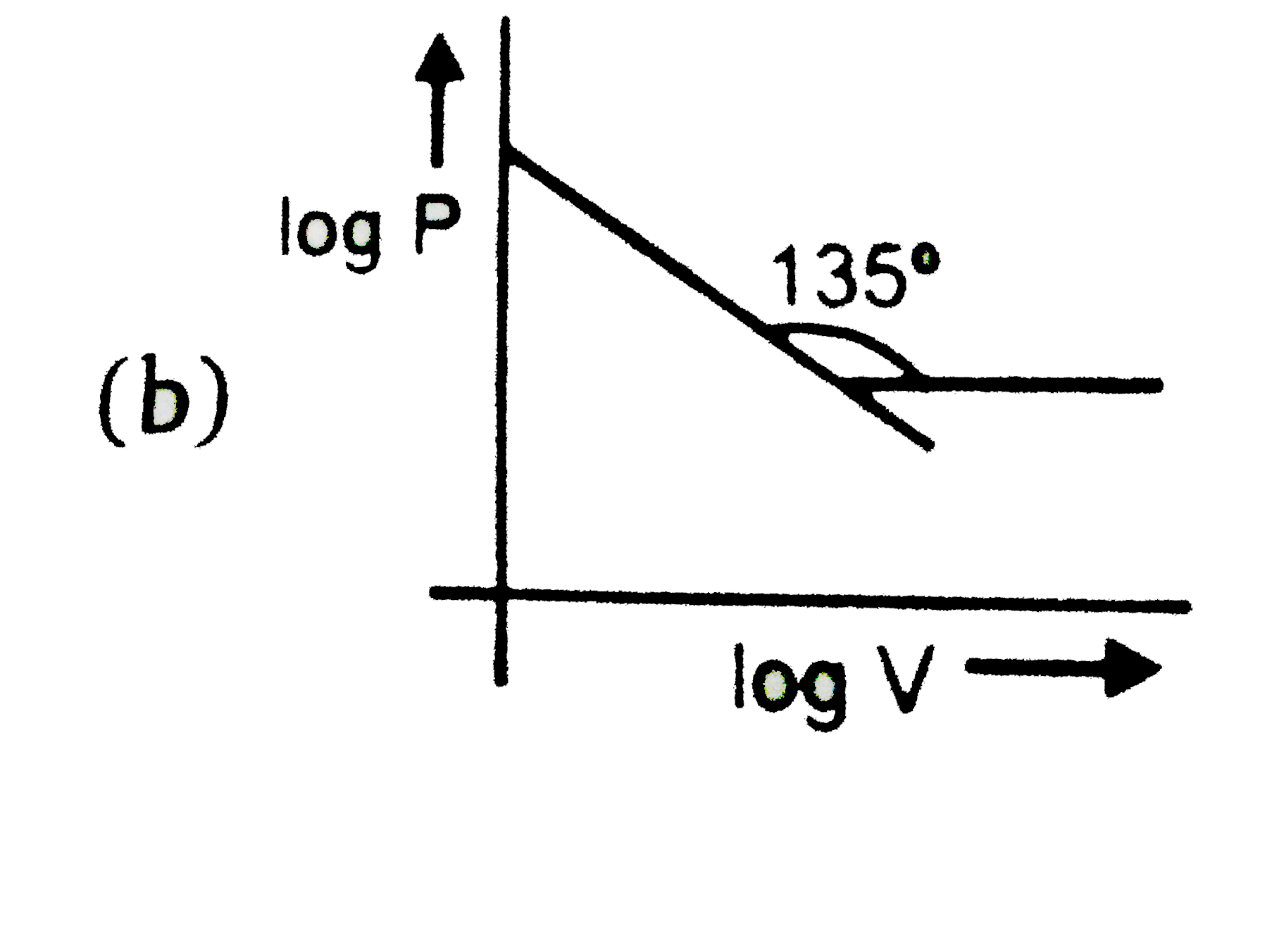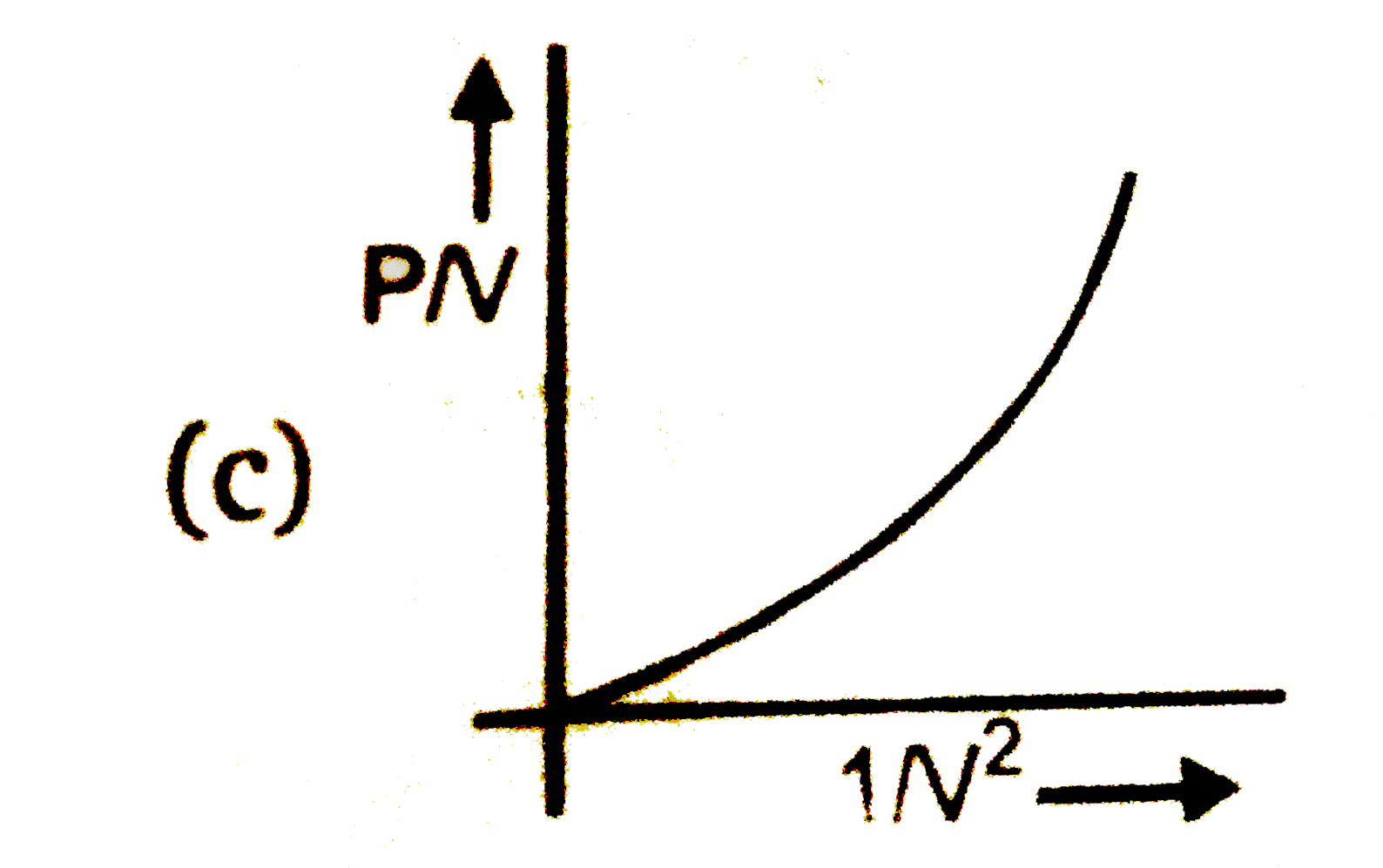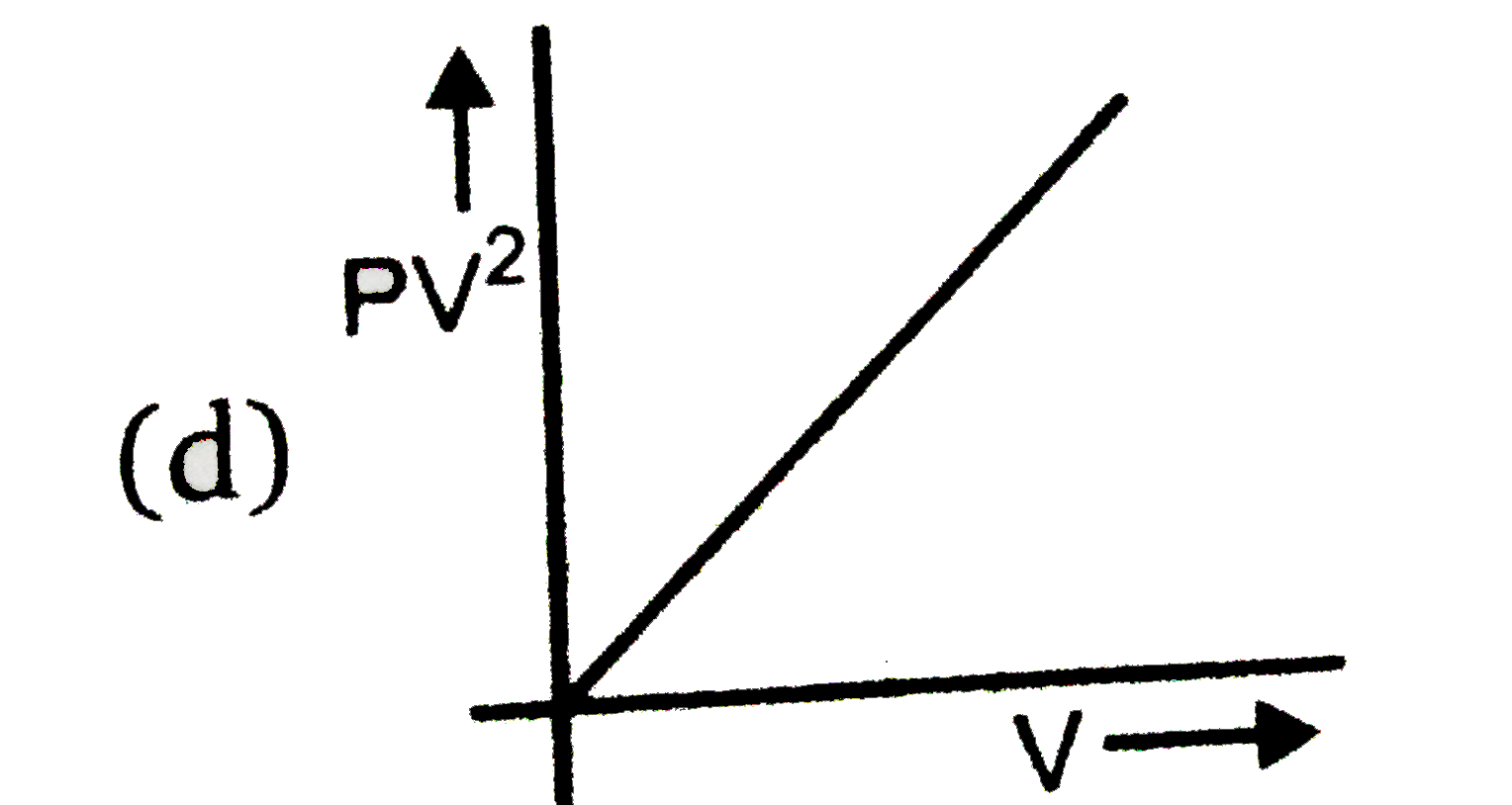Which is incorrect curve for Boyle's law ?




The correct Answer is:c
To determine which curve is incorrect for Boyle's Law, we need to understand the principles behind Boyle's Law and how it is represented graphically.
1. Understanding Boyle's Law:
Boyle's Law states that for a given mass of gas at constant temperature, the pressure (P) of the gas is inversely proportional to its volume (V). Mathematically, this can be expressed as:
PV=k
where k is a constant.
2. Graphical Representation:
- The relationship can be represented graphically in different ways:
- P vs V: A hyperbolic curve that shows that as volume increases, pressure decreases.
- P vs 1/V: A linear graph where pressure increases as the inverse of volume increases.
- log(P) vs log(V): A linear graph where the slope is negative, indicating an inverse relationship.
3. Identifying Incorrect Curves:
- We need to analyze the given options to identify which ones do not conform to Boyle's Law.
- If a graph shows a direct relationship between pressure and volume (i.e., as volume increases, pressure also increases), it would be incorrect according to Boyle's Law.
4. Evaluating Each Option:
- Option A: If it shows an increasing pressure with increasing volume, it is incorrect.
- Option B: If it shows a linear relationship between pressure and 1/V, it is correct.
- Option C: If it shows a negative slope in log(P) vs log(V), it is correct.
- Option D: If it shows a hyperbolic curve for P vs V, it is correct.
5. Conclusion:
After evaluating the options based on the principles of Boyle's Law, we find that Options A and C are the incorrect curves for Boyle's Law.
Final Answer:
The incorrect curves for Boyle's Law are Option A and Option C.
---
Boyle's Law states that for a given mass of gas at constant temperature, the pressure (P) of the gas is inversely proportional to its volume (V). Mathematically, this can be expressed as:
PV=k
where k is a constant.
- The relationship can be represented graphically in different ways:
- P vs V: A hyperbolic curve that shows that as volume increases, pressure decreases.
- P vs 1/V: A linear graph where pressure increases as the inverse of volume increases.
- log(P) vs log(V): A linear graph where the slope is negative, indicating an inverse relationship.
- We need to analyze the given options to identify which ones do not conform to Boyle's Law.
- If a graph shows a direct relationship between pressure and volume (i.e., as volume increases, pressure also increases), it would be incorrect according to Boyle's Law.
- Option A: If it shows an increasing pressure with increasing volume, it is incorrect.
- Option B: If it shows a linear relationship between pressure and 1/V, it is correct.
- Option C: If it shows a negative slope in log(P) vs log(V), it is correct.
- Option D: If it shows a hyperbolic curve for P vs V, it is correct.
After evaluating the options based on the principles of Boyle's Law, we find that Options A and C are the incorrect curves for Boyle's Law.
The incorrect curves for Boyle's Law are Option A and Option C.
Topper's Solved these Questions
- BOOK - NARENDRA AWASTHI ENGLISHCHAPTER - GASEOUS STATEEXERCISE - Level 230videos
GASEOUS STATE
- BOOK - NARENDRA AWASTHI ENGLISHCHAPTER - GASEOUS STATEEXERCISE - Level 3 Passage 14videos
GASEOUS STATE
- BOOK - NARENDRA AWASTHI ENGLISHCHAPTER - ELECTROCHEMISTRYEXERCISE - Subjective problems14videos
ELECTROCHEMISTRY
- BOOK - NARENDRA AWASTHI ENGLISHCHAPTER - IONIC EEQUILIBRIUMEXERCISE - Subjective problems1videos
IONIC EEQUILIBRIUM
Similar Questions
Knowledge Check
- Question 1 - Select One
Boyle.s Law is
AP1V1=P2V2BP2V1=P1V2CV1T1=V2T2DV1T1=V2T2 - Question 2 - Select One
If P,V,andT represent pressure, volume and temperature of the gas, the correct representation of Boyle's law is
AV∝1T (P constant)BV∝1P (T constant)CPV = RTDPV = nRT
According to Boyle's law
View SolutionEquation for Boyle's law is
View SolutionWhich one of the following is an incorrect form of Raoult's law?
View SolutionWhich of the following is/are true for Boyle's law?
View SolutionWhich curve does not represent Boyl's law ?
View SolutionAmong the following curves, which is not according to Charle's law ?
View Solution

